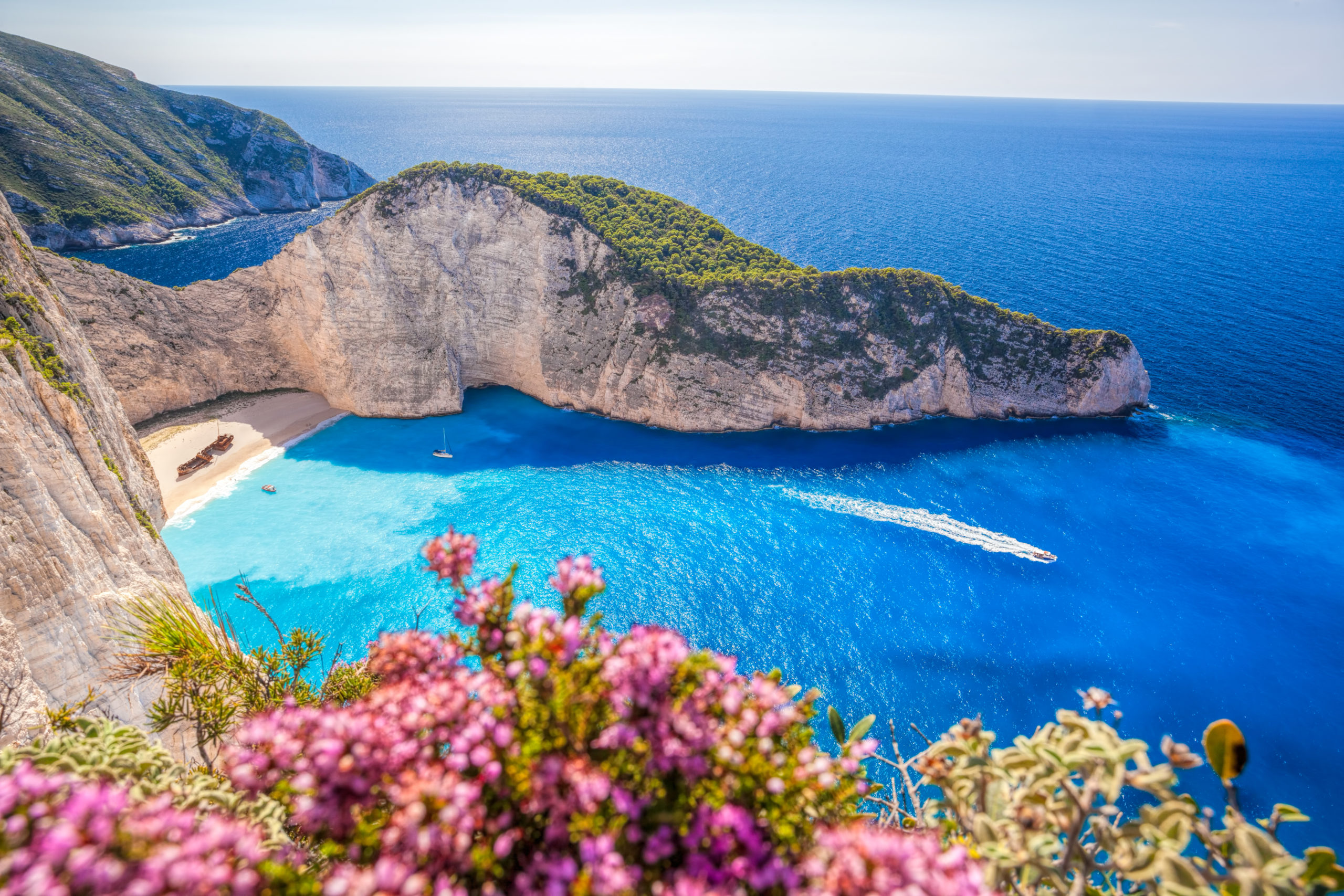With a population of just 40,000 inhabitants, Zante recorded approximately six million tourist overnight stays in 2023 – a staggering ratio of 150 visits per resident. This Ionian Sea island, also known as Zakynthos, holds the European record for overtourism according to a recent study by British consumer association Which?.
Covering an area of 406 km², Zante is the third largest Ionian island after Corfu and Kefalonia. Zante town, the capital of the eponymous island, sits on the eastern coast and houses around 16,000 inhabitants – nearly half of Zakynthos’s total population. But these figures explode during the summer season when the island becomes one of the Mediterranean’s most sought-after destinations.
What draws the crowds to Zante?
Navagio Beach remains unquestionably Zante’s main attraction. This cove with crystal-clear waters, accessible only by boat, houses the wreck of an old smuggler’s ship that ran aground in 1980. The site regularly features in rankings of the world’s most beautiful beaches. From the cliffs of Anafonitria, the view over this bay remains spectacular, even though the beach itself will be closed to visitors in 2024 for safety reasons.
In the island’s north, the Blue Caves offer a striking natural spectacle. These marine cavities carved into limestone cliffs create exceptional light displays with the turquoise water. Further south, the golden sand beaches of Laganas Bay stretch for several kilometres, but their tranquillity is essential: these beaches are protected as they welcome endangered loggerhead sea turtles Caretta caretta, which come to lay their eggs between May and October.

Living in Zante: residents caught between tradition and mass tourism
The capital concentrates nearly half of the island’s permanent residents. Rebuilt after the devastating 1953 earthquake, the town blends modern architecture with traditional buildings. The Church of Saint Dionysios, dedicated to the island’s patron saint, and Solomou and Saint Mark’s squares remain important landmarks for locals.
In the hinterland, villages like Gyri, Loucha or Kampi preserve their authentic character. Here, cobbled streets and stone houses tell another story of Zante – that of an agricultural island where olive trees and vines are still cultivated. The hilltop village of Bochali offers stunning views over the capital and sea, particularly appreciated at sunset.
“Rents are rising, traffic is constant in summer and services are overwhelmed. We welcome tourism, but the volume needs managing,” testifies a resident of the main town. This tourist pressure is profoundly transforming the daily life of Zantiotes, forced to adapt to a massive influx concentrated over just a few months.
The two faces of Zante tourism
The island’s south and east concentrate most tourist infrastructure. Laganas has become the nerve centre of nightlife, attracting mainly young British clientele who come to party. The seaside resorts of Tsilivi, Argassi and Kalamaki offer developed beaches, water sports and continuous entertainment.
In contrast, the western coast remains wild and rugged. Steep cliffs hide coves accessible only by boat, such as Porto Vromi or Porto Limnionas. The island’s north, around the village of Agios Nikolaos and its active port, retains a more peaceful atmosphere. The beaches there are often pebbled, the waters deeper and the ambience less festive.
This geographical divide still allows visitors seeking authenticity to find what they’re looking for, provided they avoid the most touristy areas and peak season. The months of May and September offer an interesting compromise between pleasant weather and reasonable visitor numbers.
Zante’s future will depend on its ability to manage this record influx whilst preserving what makes it attractive: exceptional nature and a still-living local culture. It’s quite a challenge!

